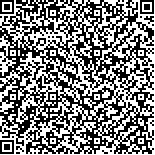Archive > Volume 43 Issue 9 > 2017,43(9):1041-1051. DOI:10.7519/j.issn.1000-0526.2017.09.002 Prev Next
An Optimization Rainfall Algorithm of SBand DualPolarization Radar Based on Hydrometeor Identification
- Article
- Figures
- Metrics
- Preview PDF
- Reference
- Related
- Cited by
- Materials
Abstract:
To improve the radar quantitative precipitation estimation, an optimization rainfall algorithm of Sband dualpolarization radar, named HCALIQ, based on hydrometeor identification is developed by referring to the Colorado State University (CSU)ICE algorithm in this study. The radar estimator R (ZH), R (ZH, ZDR), R (KDP) calculated from the raindrop size distribution data collected in South China are used in this algorithm. Both the data collected from the Sband dualpolarization radar in Zhuhai, Guangdong Province and a network of rain gauges are used to evaluate the performance of the new algorithm. Comparison is also performed between the HCALIQ and CSUICE optimization algorithms and the traditional R (ZH) method. The results show that the HCALIQ optimization algorithm is well correlated with gauges and presents high stability. In addition, the distribution of hourly accumulation bias has light relation with the distance from the radar. The estimation results of the precipitation events show that two kinds of optimization algorithms are obviously superior to the traditional R (ZH) method for convective precipitation; the R (ZH) method is better than the two optimization algorithms for mixed cloud precipitation; the three errors statistics of the HCALIQ optimization algorithm are superior to the CSUICE algorithm. According to the bias statistics of the classification of rainfall intensity, the new HCALIQ optimization algorithm bias decreases by 23% for light rain 71% for heavy rain and 68% for torrential rain respectively in comparison to the traditional R (ZH) method.
Keywords:
Project Supported:
Clc Number:
P412


Mobile website









